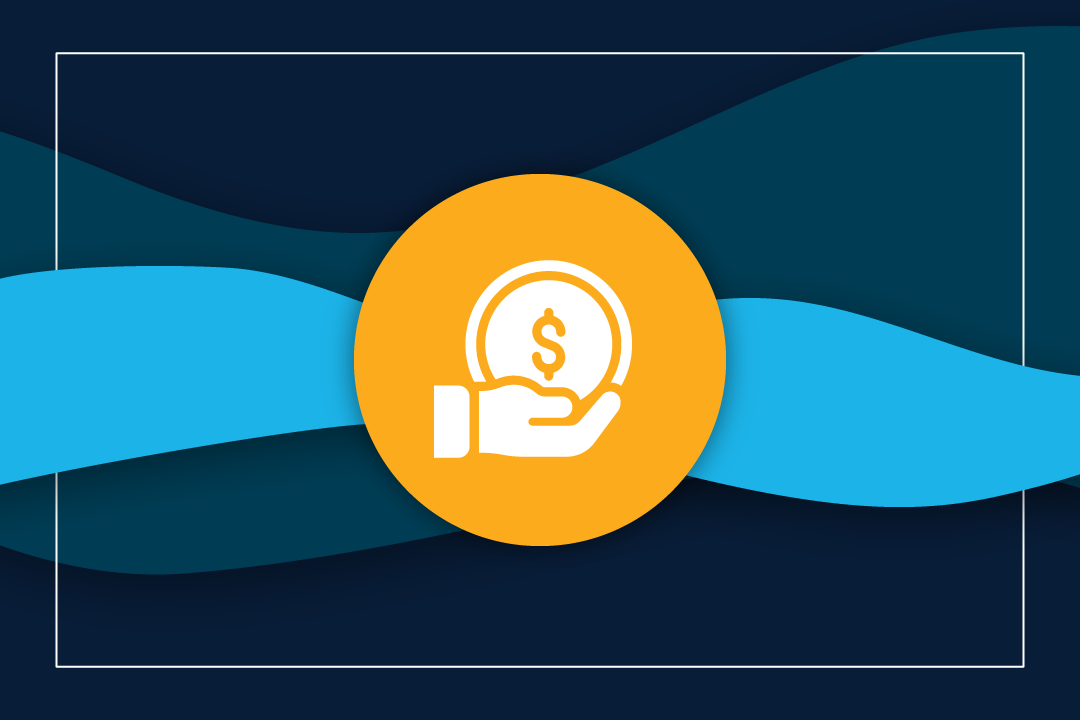Everything Small Businesses Need to Know about SBA Disaster Relief, Like PPP and IEDL
To get straight to it, below we have some questions, answers, tips and even hacks to help you put your best application forward.
TL/DR: We can help you sort this out. Just call KCSourceLink at 816-235-6500 and we connect you with Resource Partners that can help with paperwork. (Yep, those services are free.)
Here we go. Let’s start at the top.
SBA Disaster Loans
The Coronavirus Aid, Relief, and Economic Security Act (“CARES Act”) expands existing eligibility requirements and provides greater funding opportunities for businesses seeking relief from the federal government.
SBA Coronavirus Pandemic Disaster Loans
Do you need help covering the cost of retaining employees?
The Paycheck Protection Program (PPP), one of the largest sections of the CARES Act, is the most important provision in the new stimulus bill for most small businesses. This new program sets aside $350 billion in government-backed loans from private banks that can, in some cases, be converted to grants, which means that if you meet the requirements you won’t need to pay the loan back.
PPP is a loan designed to provide a direct incentive for small businesses to keep their workers on the payroll. SBA will forgive loans if all employees are kept on the payroll for eight weeks and the money is used for payroll, rent, mortgage interest or utilities.The Paycheck Protection Program will be available through June 30, 2020.
What businesses are eligible for these loans?
The Paycheck Protection Program offers loans for the following types of businesses experiencing revenue disruption as a result of COVID-19:
- Small businesses with fewer than 500 employees.
- Select types of businesses with fewer than 1,500 employees.
- 501(c)(3) non-profits with fewer than 500 workers.
- Some 501(c)(19) veteran organizations.
- Self-employed workers, sole proprietors, and freelance or gig economy workers.
Businesses, even without a personal guarantee or collateral, can apply one of these loans as long as they were operational on February 15, 2020, and had paid employees at that time (even if the owner is the only employee). On a final note, the SBA’s 500-employee threshold includes all types of employees: full-time, part-time, and any other status.
SBA Economic Injury Disaster Loans and PPP
Can a business get an EIDL and a PPP loan? Yes, small businesses can get both an EIDL and a Paycheck Protection Program loan as long as they don’t pay for the same expenses. However, be sure to check with your financial advisor or lender before taking both types of loans if you are not sure of the specifics.
More resources on PPP for deeper dives:
- FAQs on the Paycheck Protection Program,Greater KC Chamber of Commerce
- FAQs on the Payment Protection Program, U.S. Senate Committee on Small Business and Entrepreneurship
- “What’s in the just-passed small-business Paycheck Protection Program,” Kansas City Business Journal
- Stimulus Bill Update: Additional SBA Relief Available to Coronavirus-Impacted Small Businesses, Husch Blackwell
SBA Economic Injury Disaster Loan
The Small Business Administration is offering Economic Injury Disaster Loans (EIDL) for small businesses with substantial economic injury. Here “substantial” means that a business is unable to meet its obligations and unable to pay its regular and necessary operating expenses like rent, staff, etc.
- Get the FAQs about EIDL from, KCSourceLink
- See “SBA Disaster Assistance Loans” in this blog post by the Missouri SBDC at UMKC to prepare the right documents before you apply, Missouri SBDC at UMKC.
- And then, once you have your paperwork in order, apply for disaster assistance via the SBA website
UPDATED 3/31/20: Changes to SBA’s Economic Injury Disaster Loans (EIDLs)
Another important aspect of the CARES Act for small businesses is that it expands eligibility for the SBA’s Economic Injury Disaster Loans (EIDLs). In early March, the SBA’s disaster loan program was extended to all small businesses affected by COVID-19, but the CARES Act opens this program up further and makes it easier to apply.
These changes include:
- EIDLs are now also available to Tribal businesses, cooperatives, and ESOPs with fewer than 500 employees. They are also available to all non-profit organizations, including 501(c)(6)s, and to individuals operating as sole proprietors or independent contractors.
- EIDLs can be approved by the SBA based solely on an applicant’s credit score.
- EIDLs that are smaller than $200,000 can be approved without a personal guarantee.
- Borrowers can receive a $10,000 emergency grant cash advance that can be forgiven if spent on paid leave, maintaining payroll, increased costs due to supply chain disruption, mortgage or lease payments or repaying obligations that cannot be met due to revenue losses.
EIDL and Paycheck Protection Program
Can a business get an EIDL and a Paycheck Protection Program loan? Yes, small businesses can get both an EIDL and a Paycheck Protection Program loan as long as they don’t pay for the same expenses. However, be sure to check with your financial advisor or lender before taking both types of loans if you are not sure of the specifics.
How to Apply for SBA EIDL Program, Missouri SBDC
<iframe width=”560″ height=”315″ src=”https://www.youtube.com/embed/-Eu1_9U6nUI” frameborder=”0″ allow=”accelerometer; autoplay; encrypted-media; gyroscope; picture-in-picture” allowfullscreen></iframe>
Due to the overwhelming number of applicants, the SBA website may go offline from time to time.
- When the website is up and running, businesses are encouraged to visit covid19relief.sba.gov/ to apply.
- When the website is offline, you can still apply via disasterloan.sba.gov/ela/Home/OfflineApply by uploading filled out forms through a link and emailing filled out forms to [email protected] or mailing physical copies to:
U.S. Small Business Administration
Processing and Disbursement Center
14925 Kingsport Rd.
Ft. Worth, TX 76155-2243
Forgivable $10,000 Advance
The CARES Act provides additional assistance for small business owners and non-profits, including the opportunity to get up to a $10,000 Advance on an Economic Injury Disaster Loan (EIDL). This advance may be available even if your EIDL application was declined or is still pending, and will be forgiven.
If you wish to apply for the advance on your EIDL, please visit covid19relief.sba.gov/#/ as soon as possible to fill out a new, streamlined application. In order to qualify for the advance, you need to submit this new application even if you previously submitted an EIDL application. Applying for the Advance will not impact the status or slow your existing application.
Tips
- Print out the required forms and collect required info before you start filling out the application on-line (put your answers on the paper form first and then start filling out on-line, also save as you go as this is a large volume of traffic and the site may glitch).
- For those seeking the forgivable “$10,000 Advance” that submitted an application prior to March 30, you will need to go back in and submit again to ensure you receive it.
- Apply during off-peak hours from 7 p.m. to 7 a.m. is highly recommended. As you can well imagine, the site is busy!
- Save often and gather all of your information before you begin to maximize your odds of getting through the process quickly and completely.
- The SBA website has experienced high demand and outages. When the website is offline, you can still apply via disasterloan.sba.gov/ela/Home/OfflineApplye. Apply by uploading your filled out forms through a link on that page or by scanning and emailing your filled out forms to [email protected]. The SBA recommends checking the main application page for availability one final time before submitting via these alternate methods as their online application portal is still the fastest, best way to get your information into the hands of their underwriters.
- Beware of scams that offer to help you complete a loan application for a percentage of your loan. Your local Small Business Development Center (SBDC) will help you navigate this process for free. Find your office: Missouri SBDC and Kansas SBDC.
More resources on the CARES Act for deeper dives
- What Small Businesses Need to Know, U.S. Chamber of Commerce
Prepare these documents before you apply for disaster assistance.
You’ll need a full suite of business and personal documentation to apply for any loan and especially for the Economic Injury Disaster Loans (EIDL). Use the following list developed by the Missouri SBDC at UMKC as your guide.
And do be sure to get your paperwork in order before you begin the application process.
Required Documents
These are the minimum required documents for your EIDL application.
A note about personal documentation: If no one in your company has a greater than 20% stake, at least one owner will have to step up to provide this information and personally guarantee the loan. You and any business partners should begin to think about how to make that decision or share that responsibility equitably now.
SBA Form 5
This is the foundation document for the application. Be sure to select “Economic Injury” as the application type. That form can be downloaded in preparation for the online application process here: https://www.sba.gov/sites/default/files/Disaster%20Business%20Loan%20Application.pdf
Past 3 Years of Business Tax Returns
If you’ve been in business less than three years, provide as many returns as you have filed. Tax returns hold more sway and legitimacy than internally prepared financials. There are reasons to consider filing your 2019 return as soon as possible. Do also be aware that the IRS has extended the deadline to both file and pay your taxes until July 15th. Missouri has followed suit.
Most states have not yet extended tax filing deadlines. While that is likely to eventually happen, if you’re going to owe state taxes, we recommend still paying the amount that you’re likely to owe in state taxes before April 15.
Past 3 Years of Personal Tax Returns
Anyone who owns 20% or more of your company will need to provide the last three years of their personal tax returns.
4506-T
While you’ll be asked to fill in recent tax information, the SBA will have you authorize them to check with the IRS to ensure accuracy using a 4506-T form. Be sure to get your entity(s) legal names listed accurately. That form can be downloaded here: https://www.irs.gov/pub/irs-pdf/f4506t.pdf
2019 Income Statement
Show your company’s performance for each month of 2019 as well as the year’s total. Required if your 2019 taxes have not yet been filed.
2019 Balance Sheet
This provides perspective on what your company owned at the end of a “normal year” and whether those assets were purchased by owners (equity) or other people’s money (debt). Required if your 2019 taxes have not yet been filed.
Personal Financial Statement
All company owners and investors with greater than a 20% ownership stake must provide a current listing of their personal assets, debts and net worth. The required PFS form can be downloaded here: https://www.sba.gov/document/sba-form-413-personal-financial-statement-7a504-loans-surety-bonds.
Business Debt Schedule
This gives required details about all current debts. This form should be prepared in advance of your application and is downloadable here: https://www.sba.gov/sites/default/files/tools_sbf_sba202.pdf.
You may also need:
2020 Monthly Income Statements
Further evidence of how your company was doing prior to the beginning of the pandemic response.
Current Balance Sheet
This gives the most recent statement of assets, equity, and debt.
Business Narrative
The SBA or any new lender will need to have some background information about your business. Create a professional business summary of:
- Who you are and why your company was performing well prior to COVID.
- How you’ve retooled in these unexpected circumstances:
- This should include measurement of your decreased customer traffic, reduced sales, and other recent (and anticipated!) business harm.
- It should also include what actions you’ve taken to solve your cash flow needs outside of this loan request.
- How much money you need and what you will use it for:
- You should be ready to tell the SBA what amount represents 6-months of your typical expenses. However, your loan amount will be calculated by the SBA to be the equivalent of 6 months of business expenses. As such, make double, extra sure your financial information entered is correct!
- Loan request may not exceed $2 million
- How you plan to be able to pay any new loan back:
- No payments will be required until 1 year later
- Prepare a written description of how you’ll be able to repay the loan amount (automatically amortized over 30 years to keep payments low) and the other assumptions you’ve included. The SBA knows this is unprecedented and that we’re all trying to figure things out. However, you must demonstrate ability to synthesize all that you know so far about your company, your industry, and your customers and make some best educated guesses.
- Should ideally include 3 years of projected income statements (spread monthly for year 1) and accompanying balance sheets
Business Licenses
- City
- County
- State
Personal Credit Score
All lenders will review 20+% owners’ credit history and credit scores. Even in disaster, historical evidence of repaying creditors is still the best indicator of likelihood to pay new creditors. While not something you need to actually submit like the rest of these items as lenders will independently pull this information themselves, you should proactively check all three of your credit reports and scores either directly with Experian, Equifax, and TransUnion or with a reputable aggregator like Fair Isaac Corporation (FICO).
Entrepreneurial service agency Justine PETERSEN has resources to assist with personal credit building and repair, if necessary.
Review these terms as you prepare your application(s)
Some terms you’ll need to know to complete the paperwork to apply for small business disaster assistance:
Balance sheet – a financial statement that reports a company’s assets, liabilities and shareholders’ equity at a specific point in time. Learn more here
If you use an accounting system, you should be able to pull a balance sheet for the required time period. If you do not, there are templates available on line that you can fill in.
Business debt schedule (also called schedule of liabilities) – gives required details about all current debts. The SBA has a preferred method of presenting that information. https://www.sba.gov/sites/default/files/tools_sbf_sba202.pdf
Income statement (also known as profit and Loss statement or earnings statement) – a financial statement that summarizes the revenues, costs, and expenses incurred during a specified period, usually a fiscal quarter or year. These records provide information about a company’s ability or inability to generate profit by increasing revenue, reducing costs, or both.
If you use an accounting system, you should be able to pull a profit and loss statement for the required time period. SCORE offers Financial Statements Templates: https://www.score.org/resource/business-planning-financial-statements-template-gallery
Personal credit score – a statistical number that evaluates a consumer’s creditworthiness and is based on credit history: number of open accounts, total levels of debt, and repayment history. Lenders use credit scores to evaluate the probability that an individual will repay loans in a timely manner. You should proactively check all three of your credit reports and scores either directly with Experian, Equifax, and TransUnion or with a reputable aggregator like Fair Isaac Corporation (FICO).
Personal financial statement – a document or spreadsheet outlining an individual’s financial position at a given point in time. A personal financial statement will typically include general information about the individual, such as name and address, along with a breakdown of total assets and liabilities. The SBA has a preferred method of presenting that information. https://www.sba.gov/document/sba-form-413-personal-financial-statement-7a504-loans-surety-bonds
Other Resources
Recursos en español
¿Qué debes saber sobre el coronavirus (COVID-19)?
(La mención: University of Missouri Extension)
Asistencia de Desastre de la SBA en Respuesta al Coronavirus
(La mención: SBA)
La Agencia Federal de Pequeños Negocios (SBA, por sus siglas en inglés) les ofrece a ciertos estados y territorios designados préstamos federales de desastre de bajos intereses para usar como capital de trabajo a los pequeños negocios que sufren daños económicos sustanciales como resultado del Coronavirus (también llamado COVID-19).





Leave a Reply